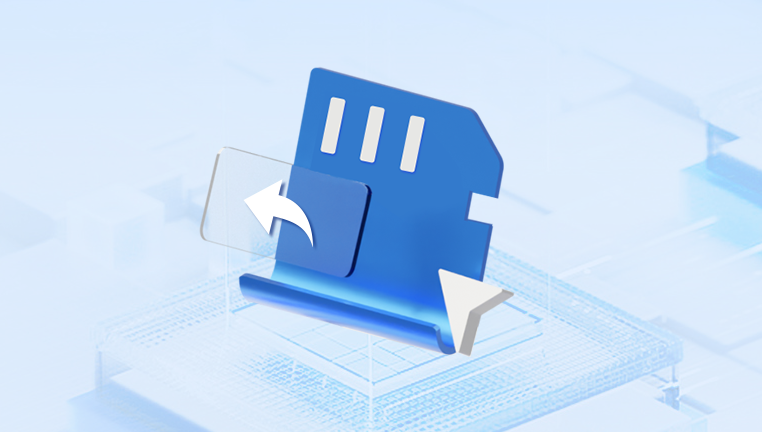Their compact size and high storage capacity make them incredibly convenient. However, with their small form factor comes a higher risk of data loss due to corruption, accidental deletion, formatting, or even physical damage.
Fortunately, micro SD data recovery services offer a lifeline. These services are designed to retrieve lost, deleted, or inaccessible data using a range of advanced techniques and technologies.
Accidental Deletion: Files are unintentionally erased by the user.
Formatting Errors: The card is formatted without backing up important files.
File System Corruption: Corruption due to improper ejection, virus attacks, or device malfunction.

Physical Damage: Bending, water damage, overheating, or broken connectors.
Bad Sectors: Parts of the card become unreadable over time.
Power Failures: Power surges or outages during data writing processes.
Firmware Issues: Problems with the card’s internal software.
Knowing the root cause helps determine the most suitable recovery method.
What Are Micro SD Data Recovery Services?
Micro SD data recovery services are specialized solutions provided by professional companies to retrieve lost data from damaged or corrupted memory cards. These services range from software-based recovery to highly technical procedures like chip-off recovery, depending on the nature and severity of the data loss.
Types of Services Offered:
Logical Data Recovery: For corruption, accidental deletion, or formatting.
Physical Data Recovery: For cards with physical or electrical damage.
Firmware Repair: For internal controller or software issues.
Chip-Off Recovery: Extracting the NAND chip and reading data directly.
These services utilize proprietary tools, cleanroom environments, and highly skilled technicians to achieve recovery outcomes that are often impossible with consumer-grade software.
When to Use a Professional Data Recovery Service
While many users initially attempt to retrieve lost data using free or paid software, there are scenarios where professional help is necessary:
The card is physically damaged or unreadable by any device.
DIY methods have failed to detect or recover data.
Critical data (e.g., business files, irreplaceable memories) is at stake.
There is a risk of further damage through improper handling.
Professional services offer a higher success rate, especially for complex issues, albeit at a cost.
How the Recovery Process Works
Initial Diagnosis: The service provider examines the card to assess damage and recovery potential.
Quote and Approval: A cost estimate is provided based on the complexity of the case.
Recovery Attempt: Technicians use tools and techniques appropriate to the issue.
Data Verification: Recovered files are verified and previewed for quality.
Data Delivery: Files are returned on a new storage device or via secure digital transfer.
Top Micro SD Data Recovery Service Providers
Here are some of the most trusted and reliable service providers:
1. Drecov Data Recovery
Drecov Data Recovery is a versatile and user-friendly tool designed to help users recover lost or deleted files from SD cards and other storage devices. Whether your SD card has been accidentally formatted, corrupted, or experienced a file system error, Panda provides a reliable way to retrieve important data such as photos, videos, documents, and app files.
One of Drecov Data Recovery's standout features is its intuitive interface. Even users with minimal technical knowledge can navigate the software and begin scanning their SD cards in just a few clicks. The software supports a wide range of file types and storage formats, making it compatible with SD, microSD, SDHC, and SDXC cards used in cameras, smartphones, drones, and tablets.
Panda’s powerful scanning engine offers two modes quick scan for recently deleted files and deep scan for more complex recoveries. It can detect files even from corrupted or unreadable SD cards. Users can preview recoverable items before restoring them, adding an extra layer of control and confidence.
2. Ontrack
Services: Full-service recovery from logical and physical damage.
Pros: Global network, transparent pricing.
Cons: Long turnaround times for standard service.
3. Gillware
Services: Logical, physical, and firmware-level recovery.
Pros: No data, no charge policy.
Cons: May not service international clients.
4. SalvageData
Services: Advanced flash recovery including chip-off.
Pros: Free diagnosis, certified lab.
Cons: May be limited for very niche card types.
5. CBL Data Recovery
Services: Physical and logical recovery from all micro SD card brands.
Pros: Offers forensic services.
Cons: Higher cost for expedited recovery.
How to Choose a Micro SD Recovery Service Provider
When selecting a provider, consider the following factors:
Certifications: ISO 5 Class 100 cleanrooms, SOC II, HIPAA compliance.
Experience: Specialization in flash and micro SD recovery.
No Data, No Charge Policy: Only pay if recovery is successful.
Free Evaluation: Helps assess the cost-effectiveness upfront.
Customer Reviews: Check testimonials and success stories.
Security Measures: Ensure data is handled securely and confidentially.
Common Brands and File Types Recovered
Brands:
SanDisk
Samsung
Kingston
Lexar
PNY
Transcend
Sony
File Types:
Photos (JPG, PNG, RAW)
Videos (MP4. MOV, AVI)
Documents (DOCX, PDF, XLSX)
App Data
Backup Files
GPS and drone logs
How to Maximize the Chances of Successful Recovery
Stop Using the Card: Continued use may overwrite lost data.
Avoid DIY Fixes on Physical Damage: Mishandling can worsen the situation.
Use Reputable Services: Don’t compromise with unverified providers.
Document the Problem: Note symptoms and what led to the loss.
Act Quickly: The longer you wait, the lower the chances of success.
Prevention: How to Protect Your Micro SD Card
Back Up Regularly: Always keep a backup of critical files.
Use Quality Cards: Invest in trusted brands and high-grade cards.
Safely Eject Devices: Avoid abrupt removals.
Keep Cards Dry and Cool: Protect from heat and moisture.
Label and Organize: Prevent accidental formatting or mix-ups.
Use Reliable Card Readers: Poor-quality readers can corrupt data.
Micro SD cards are a cornerstone of modern data storage, but their vulnerability makes data loss a common concern. Whether it’s accidental deletion or catastrophic physical damage, data recovery services provide a critical solution for restoring lost files. While software tools may help in minor cases, professional services offer advanced techniques like chip-off recovery that can retrieve data from even the most damaged cards.
Choosing the right recovery provider can make all the difference. Factors like experience, certifications, transparent pricing, and a solid success rate should guide your decision. More importantly, preventive care and regular backups can help you avoid the need for recovery services altogether.




